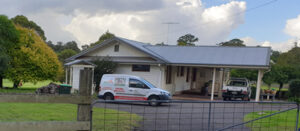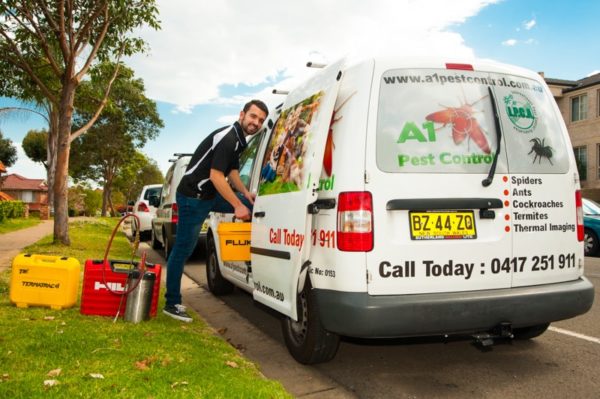Rodent Control Sydney Hills District?
Weird Noises in Your Roof?
Tackling Rodent Infestations: A Comprehensive Guide to Safe Rodent Control in Sydney’s Hills District
Sydney’s Hills District is an enviable place to call home. However, amid the beauty and tranquility, residents face a persistent challenge—rodent infestations.

Ganesh was happy with our safe child and pet friendly rat and mice control services.
Here is another Sydney Hills District rodent control client’s home below:

These unwelcome rats and mice not only pose health risks but also threaten the structural integrity of properties. To address this issue effectively, it’s crucial to understand the areas most affected and implement safe and efficient rodent control measures.
Why Selontra is our recommended rodent bait:
1. Fast-Acting Rodent Control
- Selontra® can eliminate a rodent infestation in as little as seven days, significantly faster than traditional rodenticides.
- Unlike anticoagulants that require multiple feedings over days or weeks, Selontra® delivers a lethal dose in a single feeding.
- This rapid action helps in controlling infestations before rodents reproduce, preventing population growth.
2. Non-Anticoagulant Mode of Action
- Selontra® uses cholecalciferol (Vitamin D3) as its active ingredient.
- Instead of causing internal bleeding like traditional anticoagulant baits, it disrupts calcium metabolism, leading to kidney failure in rodents.
- This mechanism:
- Works on rodents that have developed resistance to anticoagulant poisons.
- Results in quicker rodent death with less suffering.
3. Highly Palatable Formula for Greater Effectiveness
- Selontra® has a highly attractive bait matrix, making it more appealing than common food sources like grains and garbage.
- This is particularly important in:
- Food processing facilities
- Warehouses
- Farms
- Urban infestations (where rodents have many food alternatives)
- By ensuring rodents consume the bait quickly and completely, Selontra® shortens the treatment duration.
4. Reduced Risk of Secondary Poisoning
- A major concern with many rodenticides is secondary poisoning, where predators (like owls, hawks, or pets) consume poisoned rodents and become sick.
- Selontra® breaks down quickly in the rodent’s system, significantly reducing the risk to non-target animals.
- This makes it a safer choice for:
- Pet owners
- Wildlife conservation areas
- Agricultural settings where farm animals are present
5. Effective Against Resistant Rodent Populations
- Many rodent species have developed resistance to anticoagulant rodenticides over decades.
- Selontra®, with its non-anticoagulant mechanism, remains effective against resistant populations, making it a key tool for professional pest management.
6. Durable and Weather-Resistant
- Selontra® is formulated to withstand different environments, making it useful for both indoor and outdoor applications.
- It remains stable in humid or damp conditions, making it ideal for:
- Sewers
- Basements
- Storage rooms
- Fields and agricultural sites
- Unlike some baits that degrade quickly, Selontra® maintains long-lasting attractiveness and potency.
7. Cost and Labor Efficiency
- Since Selontra® delivers a lethal dose in a single feeding, rodents consume less bait overall, making it more cost-effective.
- Fewer bait applications mean:
- Reduced labor costs for pest control professionals.
- Less time spent on monitoring and replenishing baits.
- Lower overall product usage, leading to savings in large-scale rodent control programs.
8. Environmental and Safety Benefits
- Lower risk to non-target species due to its fast breakdown in the rodent’s body.
- Minimal contamination risk to soil and water sources, making it an environmentally responsible option.
- Reduces the likelihood of rodent carcasses being found in inconvenient or hazardous locations due to the quicker kill time.
Conclusion: Why Choose Selontra?
✅ Faster control than anticoagulant baits
✅ Works against resistant rodents
✅ Highly attractive to rodents, even in food-rich areas
✅ Reduced secondary poisoning risk
✅ Durable in different environmental conditions
✅ Cost-effective, requiring fewer applications
Would you like guidance on how to apply Selontra® effectively in a specific setting (e.g., home, warehouse, farm, or business)?
How to Apply Selontra® Rodent Bait Effectively
Proper application of Selontra® is key to achieving fast and effective rodent control. Below is a step-by-step guide tailored to different settings.
1. Identify the Rodent Species and Infestation Level
- Norway rats (Rattus norvegicus) tend to burrow and stay close to ground level.
- Roof rats (Rattus rattus) are climbers and prefer high places like attics or rafters.
- House mice (Mus musculus) are more curious and spread throughout buildings.
Signs of Infestation:
✅ Droppings near food or water sources
✅ Gnaw marks on furniture, wiring, or walls
✅ Grease marks along baseboards
✅ Scratching noises at night
Tip: Conduct a thorough inspection to locate entry points, runways, and nesting sites before bait placement.
2. Strategic Bait Placement
The goal is to maximise rodent access while keeping bait away from non-target species.
📌 Indoor Placement (Homes, Warehouses, Businesses)
✔️ Near walls, corners, and entry points – Rodents travel along walls for safety.
✔️ Close to nesting areas and food sources – In kitchens, pantries, storage areas.
✔️ Attics, basements, and crawl spaces – Especially for roof rats and house mice.
✔️ Bait stations – Secure bait in tamper-resistant stations to prevent access by pets or children.
Tip: Space bait 4.5–9 metres apart for rats and 2.5–3.5 metres apart for mice depending on infestation levels.
📌 Outdoor Placement (Farms, Industrial, and Agricultural Settings)
✔️ Along perimeter walls and fence lines – Rats use these as pathways.
✔️ Near burrows or under decks – Norway rats dig burrows in soft soil.
✔️ Near garbage bins and food storage – Frequent hotspots for rodent activity.
✔️ Around livestock areas – Ensure bait is placed in weatherproof bait stations to prevent contamination.
Tip: Secure bait stations every 6–12 meters outdoors to create a barrier against invading rodents.
3. Baiting Strategy: The “Stop-Feed” Advantage
Selontra® works faster than anticoagulants because rodents stop feeding after consuming a lethal dose.
Initial Phase (Days 1–3)
- Place bait in high-activity areas.
- Monitor daily and replace consumed bait to ensure all rodents have access.
Active Control Phase (Days 4–7)
- Most rodents will have stopped feeding and begun dying.
- Remove and properly dispose of any dead rodents.
- Replenish bait if activity is still detected.
Final Monitoring Phase (Days 7–14)
- Continue checking bait stations. If little to no bait is being consumed, the infestation is likely controlled.
- Seal entry points and remove food/water sources to prevent reinfestation.
Tip: Keep using non-toxic monitoring bait after control to detect any future rodent activity.
4. Safety and Best Practices
✅ Use tamper-resistant bait stations in areas accessible to pets, children, or wildlife.
✅ Wear gloves when handling bait to avoid human scent contamination.
✅ Dispose of dead rodents safely using gloves or tongs, placing them in sealed plastic bags.
✅ Rotate bait types periodically to prevent bait shyness.
5. Special Considerations for Different Environments
🏡 Homes & Small Businesses
- Focus on attics, garages, kitchens, and subfloors.
- Use enclosed bait stations for pet and child safety.
- Check for and seal cracks and holes to prevent reinfestation.
🏢 Warehouses & Commercial Buildings
- Install bait stations along walls, storage racks, and entry doors.
- Use high-capacity bait stations for larger infestations.
- Monitor activity weekly for ongoing control.
🚜 Farms & Agricultural Settings
- Secure bait stations near grain storage, animal feed, and water sources.
- Regularly check perimeter fencing and outbuildings for signs of reinfestation.
- Consider integrated pest management (IPM) by reducing harborage (e.g., trimming vegetation).
Why Selontra® Is a Game-Changer
✔ Fast knockdown (infestations cleared in ~7 days)
✔ Less bait consumption (rodents stop feeding after a lethal dose)
✔ Effective against anticoagulant-resistant rodents
✔ Lower secondary poisoning risk
✔ Works in diverse environments (homes, warehouses, farms, etc.)
Here, we’ll explore the top ten suburbs in the Hills District facing rodent infestations and provide actionable tips for safe rodent control.
- Baulkham Hills: With its mix of residential areas and commercial establishments, Baulkham Hills is a prime target for rodent activity. Its proximity to green spaces and water sources provides ideal conditions for rodent breeding. Residents here should prioritize sealing off entry points, maintaining cleanliness, and implementing targeted rodent control methods to prevent infestations.
- Castle Hill: As one of the largest suburbs in the Hills District, Castle Hill’s expansive residential neighbourhoods and shopping centres offer ample opportunities for rodents to thrive. Regular inspections and proactive measures such as proper waste management and vegetation control can help mitigate the risk of infestations.
- Kellyville: Known for its family-friendly atmosphere and spacious homes, Kellyville is not immune to rodent problems. Its suburban landscape, dotted with parks and reserves, provides rodents with ample hiding spots and food sources. Residents can combat infestations by securing trash bins, eliminating standing water, and sealing off entry points.
- Pennant Hills: Nestled amidst lush greenery and bushland reserves, Pennant Hills is a haven for nature enthusiasts. However, its natural surroundings also make it susceptible to rodent infestations. Vigilant property maintenance, including regular gutter cleaning and vegetation trimming, can help deter rodents from taking up residence.
- West Pennant Hills: Adjacent to Pennant Hills, West Pennant Hills shares similar environmental characteristics, making it prone to rodent activity. Homeowners here should focus on rodent-proofing their properties by installing mesh screens on vents, sealing gaps to the subfloor, and keeping yards tidy to reduce potential hiding spots.
- Dural: Renowned for its rural charm and acreage properties, Dural presents unique challenges in rodent control. Its expansive landscapes and abundance of vegetation create ideal habitats for rodents. Residents can safeguard their homes by implementing integrated pest management strategies, including habitat modification and exclusion techniques.
- Glenhaven: Surrounded by scenic reserves and parklands, Glenhaven offers a peaceful retreat from the hustle and bustle of city life. However, its semi-rural setting also makes it susceptible to rodent infestations. Regular inspections of roof voids and subfloor crawl spaces, coupled with proper sanitation practices, are essential for rodent prevention.
- Rouse Hill: Boasting modern amenities and bustling retail precincts, Rouse Hill is a thriving suburb in the Hills District. Yet, its urban landscape presents challenges in rodent control, particularly in densely populated areas. Residents can combat infestations by maintaining hygienic practices, storing food properly, and eliminating clutter.
- Glenorie: Characterized by its tranquil ambiance and expansive acreages, Glenorie offers residents a rural lifestyle within reach of urban conveniences. However, its sprawling properties and abundant vegetation attract rodents seeking shelter and sustenance. Residents should focus on proactive rodent control measures, including regular property inspections and targeted baiting programs.
- Cherrybrook: Known for its leafy streets and family-oriented community, Cherrybrook is a sought-after suburb in the Hills District. Yet, its suburban landscape harbours hidden risks of rodent infestations.
The Dangers of Second-generation rodenticides (SGARs)
Second-generation rodenticides (SGARs) are a class of highly potent anticoagulant rodenticides developed to overcome resistance to first-generation rodenticides. They are more toxic and persist longer in the body, making them more effective against rodents like rats and mice. However, their prolonged action also increases the risk of secondary poisoning in non-target wildlife and pets.
Examples of Second-Generation Rodenticides:
- Brodifacoum – Highly toxic, used in both agricultural and urban pest control.
- Difethialone – Effective in controlling resistant rodent populations.
- Bromadiolone – Commonly used in commercial and residential settings.
- Difenacoum – Used in both urban and agricultural areas.
- Flocoumafen – Extremely potent, generally used for severe infestations.
How They Work:
SGARs inhibit vitamin K-dependent clotting factors, leading to internal bleeding and death. Rodents usually die a few days after consuming a lethal dose.
Risks and Concerns:
- Persistence in the Environment: SGARs remain in the liver of poisoned animals for weeks to months, increasing the risk of secondary poisoning in predators and scavengers.
- Secondary Poisoning: Non-target species such as owls, hawks, foxes, and pets may be affected if they consume poisoned rodents.
- Regulations: Due to their environmental impact, some countries and regions have restricted or banned certain SGARs, especially for non-professional use.
Safer Rodent Control Methods
There are several safer alternatives to second-generation rodenticides (SGARs) that can effectively control rodent populations while reducing harm to wildlife, pets, and the environment. Here are some options:
1. First-Generation Anticoagulant Rodenticides (FGARs)
- Examples: Warfarin, Chlorophacinone, Diphacinone
- Pros: Less persistent in the environment, lower risk of secondary poisoning.
- Cons: Require multiple feedings to be effective, some rodent populations have developed resistance.
2. Non-Anticoagulant Rodenticides (Less risk of secondary poisoning)
- Cholecalciferol (Vitamin D3) – Causes calcium buildup in the bloodstream, leading to organ failure in rodents.
- Zinc Phosphide – A fast-acting toxicant that releases phosphine gas in the stomach, but is dangerous to non-target species.
- Bromethalin – A neurotoxin that disrupts energy production in cells, leading to paralysis and death. However, it has no antidote.
3. Mechanical & Humane Traps
- Snap Traps – Instant kill, reusable, effective when placed properly.
- Electronic Traps – Deliver a high-voltage shock for a humane and quick kill.
- Live-Catch Traps – Allow relocation of rodents, but may not be legal in some areas.
4. Natural Predators
- Encouraging predators like barn owls, hawks, and snakes can naturally reduce rodent populations.
- Installing owl nest boxes can attract owls, which can eat hundreds of rodents per year.
5. Integrated Pest Management (IPM)
A long-term, environmentally friendly approach that A1 Pest Control recommends which includes:
- Sealing Entry Points: Close gaps, cracks, and holes where rodents can enter.
- Removing Food Sources: Store food in sealed containers and clean up spills.
- Eliminating Nesting Areas: Remove clutter, tall grass, and debris around buildings.
- Using Natural Repellents: Essential oils like peppermint, cloves, and vinegar can deter rodents.
6. Birth Control for Rodents
- ContraPest (uses fertility control to limit rodent reproduction) is an innovative, non-lethal option.
While SGARs are highly effective, they pose significant risks to non-target wildlife. Choosing alternatives like traps, non-anticoagulant poisons, natural predators, or Integrated Pest Management can be safer and more sustainable.
Second-generation anticoagulant rodenticides (SGARs) such as brodifacoum, difethialone, bromadiolone, difenacoum, and flocoumafen are available in Australia under various brand names.
Here are some brand name examples of SGARs in Sydney:
| Active Ingredient | Brand Names |
|---|---|
| Brodifacoum | – Reckitt Mortein Kills Rats & Mice and the Fleas They Carry Dual Action Baits – Reckitt Mortein Rat Kill Professional Household Protection |
| Difethialone | – DITRAC All Weather BLOX Rodenticide |
| Bromadiolone | – BASF Australia Storm Secure Wax Block – Bayer Rodilon Pro Rodenticide – Bell Laboratories Inc. Contrac All-Weather Blox Rodenticide – Bell Laboratories Inc. Contrac Blox – Bell Laboratories Inc. Contrac Soft Bait – Bell Laboratories Inc. II Tomcat II Blox Rodenticide – Bell Laboratories Inc. Tomcat All-Weather Blox – De Sangosse Australia Bromakil Grain Bait for Rats and Mice – De Sangosse Australia Bromakil Super Rat Drink – Liphatech Generation Blue Rodenticide Soft Bait – PCT Holdings Surefire Broma Blocks Rodenticide – Pelgar International (Aus) The Big Cheese Home Choice All-Weather Block Bait – Pelgar International (Aus) The Big Cheese Home Choice Rat & Mouse Kill Throw Packs – Pelgar International (Aus) The Big Cheese Ultra Power Fast Action Bait Blocks – Pelgar International Roban Rodenticide Blocks – Triox Pestmaster Rat and Mouse Killer – Yates RATSAK Fast Action Bait Station Kills Rats & Mice – Yates RATSAK Fast Action Disposable Mouse Bait Station with Wax Block |
| Difenacoum | – PCT Holdings Surefire Difenate Blocks Rodenticide |
| Flocoumafen | – Freezone Public Health Ratshot Final Kill Paste Rodenticide – Freezone Public Health Ratshot One-Shot Rodenticide Pellets – Freezone Public Health Ratshot Rapid Kill Rodenticide Blocks |
Please note that the use of SGARs poses significant risks to non-target wildlife, including birds of prey. Conservation organizations recommend avoiding products containing these active ingredients and opting for first-generation anticoagulant rodenticides (FGARs) or non-chemical control methods when possible.
Our Pest Management Services Include:
- Spiders
- Ants
- Cockroaches
- Termites (White Ants)
- Rats & Mice (Rodents)
- Pest Reports and Termite Inspections
Our Clients Include:
- Warehouses And Offices
- Commercial And Industrial Sites
- Restaurants And Dining Areas
- Childcare And Early Learning Centres
- Property Management
- Healthcare Facilities
- Government, Schools And Education

A Local Pest Control Service Near Me You Can Trust
We are Commercial Pest Control and Termite Treatment experts. We also have experience and accreditation in Tick Control, Rodent Pest Control and Termite Baits. Need urgent help in the Hills District and North Shore with Termite Inspections Sydney or Flea Treatment Sydney?
Please call Bruce, a termite expert on 0417 251 911 for any questions about termites or emailing bruce@a1pestcontrol.com.au
To safeguard their homes, residents should implement a multifaceted approach to rodent control.
This should be by combining preventive measures with targeted treatments.
Rodent infestations pose a persistent threat to residents of Sydney’s Hills District, requiring proactive and concerted efforts to address effectively.
By identifying high-risk areas and implementing safe and efficient rodent control measures, homeowners can protect their families and properties from the dangers associated with rodent activity.
With vigilance, collaboration, and a commitment to safety, the Hills District can remain a haven of tranquility, free from rodent-related woes.
As the leaves change colour and the warmer weather arrives, many small pests will begin to look for shelter indoors – and homes are the perfect refuge from all types of weather conditions.
A1 Pest Control reminds homeowners of the importance that exclusion can play in keeping pests such as rodents and other small animals from becoming unwelcome houseguests during the warmer months. It’s that time of year again, so you may have noticed mice starting to enter your home.
Here Are Some Hints for Keeping the Mice Out
RATS!
The most important and prevalent rat in the Hills District is the Norway Rat. A large bodied brown rodent, it is also referred to as a common or street/sewer rat.
You will be aware of infestations through evidence of gnawing and an abundance of blunt ended droppings.
The average length from the tip of the nose to the end of the tail, which is quite short in relation to the rest of the body, is around 40 centimetres long and they can weigh up to 340 grams.
Their fur ranges in colour from reddish brown to dark grey and due to high variation amongst rats, fur colour is not a reliable way to tell one rat from another.
Even though the Norway rats have only small ears their hearing is fine tuned and highly accurate. Not so their sense of sight.
Relying on their keen sense of smell and taste, their eyes perform poorly and they are colour blind.
Rats are what is called `crepuscular’ creatures, which means they are active around sunset and sunrise, but not during the day or the middle of the night.
Norway rats are known to be exceptional leapers, runners, and swimmers as well as being capable of climbing pipes, bricks and tree trunks.
Contrary to its name, the Norway rat is originally from Eastern Asia but was readily spread by human movement over the last few centuries. It is especially adept at living with humans and tends to thrive in both urban and rural settings.
Norway rats tend to dig their burrows into the soil to use them as a shelter. Nesting sites within these burrows are common.
Within cities, they use the same tactics, using drains, sewers and holes in construction sites as homes!
Managing rodent infestations is usually a combination of exclusion (sealing up places that allow rats to come in and out of your house), trapping and baiting.
More Tips!Did You Know:
- Mice are the number one cause of unexplained fires because of their tendency to gnaw on wires?
- Mice can contaminate food and transmit various pathogens, such as Salmonella, the causative agent of food poisoning, by walking across various foods or food preparation surfaces?
- Adults can produce nearly 40 offspring per year over four litters.
- Rodents carry disease, cause fires and property damage.
- The real concern is that rodents and other smaller pests pose serious health threats by contaminating food and transmitting bacteria.
- Mice and rats can spread diseases like Salmonella and Hantavirus.
- Rodents also put homes at risk for electrical fires by gnawing on wires and cause leaks by chewing through water lines.
- We know that exclusion (pest-proofing) is not always easy, but it’s important for homeowners to spend some time over the next few weeks taking steps to protect their properties from dangerous pests.
To Prevent Rodents From Inhabiting Your Home:
- Restrict all potential sources of water, especially dripping taps, leaking pipes and pooled water in your sub-floor.
- Firewood and long grass provide perfect havens and hiding places for our furry friends. Store firewood well away from the house and keep grass and shrubs cut short.
- Inspect all incoming food items before bring inside, store grain and cereals in airtight containers. Get rid of garbage promptly and make sure all bins are sealed and kept away form your home.
- Below are some tips to use in your commercial business which will help you avoid health and property risks that come with rat and mice infestations.
- “Pest-proof” your business by being vigilant of building maintenance needs.
- Dispose of garbage regularly and store in sealed containers.
- Seal cracks and holes on the outside of your business, including entry points for utilities and pipes.
- Don’t overlook proper drainage at the foundation; install gutters or diverts, which will channel water away from the building.
- Be sure your employees keep food sealed and stored properly.
- Clean high-volume areas daily, such as public eating areas and kitchenettes, where crumbs and rubbish are more likely to build up.
Call A1 today on 0417 251 911, your local Sydney Commercial Pest Control Specialists!
Over the last 40 years, we have built a reputation for customer service,
always keeping both our commercial and residential clients happy and free of pests.
Suburb | Risk |
| Baulkham Hills Pop: 37,029 | HIGH |
| Castle Hill Pop: 35,728 | HIGH |
| Quakers Hill Pop: 29,818 | HIGH |
| Carlingford Pop: 29,114 | HIGH |
| Kellyville Pop: 28,722 | HIGH |
| Seven Hills Pop: 20,482 | HIGH |
| Cherrybrook Pop: 18,675 | HIGH |
| West Pennant Hills Pop: 16,374 | HIGH |
| Glenwood Pop: 15,325 | HIGH |
| The Ponds Pop: 11,731 | HIGH |
| Winston Hills Pop: 11,674 | HIGH |
| Kellyville Ridge Pop: 10,468 | HIGH |
| Kings Langley Pop: 9,348 | HIGH |
| Beaumont Hills Pop: 9,042 | HIGH |
| Rouse Hill Pop: 7,965 | HIGH |
| Bella Vista Pop: 7,837 | HIGH |
| Stanhope Gardens Pop: 7,671 | HIGH |
| North Rocks Pop: 7,625 | HIGH |
| Dural Pop: 7,570 | HIGH |
Suburb | Risk |
| Pennant Hills Pop: 7,287 | HIGH |
| Glenhaven Pop: 6,501 | HIGH |
| Kenthurst Pop: 5,037 | HIGH |
| Glenorie Pop: 3,497 | HIGH |
| Parklea Pop: 3,455 | LOW |
| Galston Pop: 3,139 | HIGH |
| North Kellyville Pop: 1,677 | HIGH |
| Annangrove Pop: 1,397 | HIGH |
| Maraylya Pop: 1,172 | LOW |
| Middle Dural Pop: 931 | HIGH |
| Box Hill Pop: 902 | LOW |
| Cattai Pop: 790 | LOW |
| Maroota Pop: 617 | LOW |
| Lower Portland Pop: 589 | LOW |
| Nelson Pop: 454 | LOW |
| Leets Vale Pop: 276 | LOW |
| Fiddletown Pop: 243 | LOW |
| Berrilee Pop: 224 | LOW |

